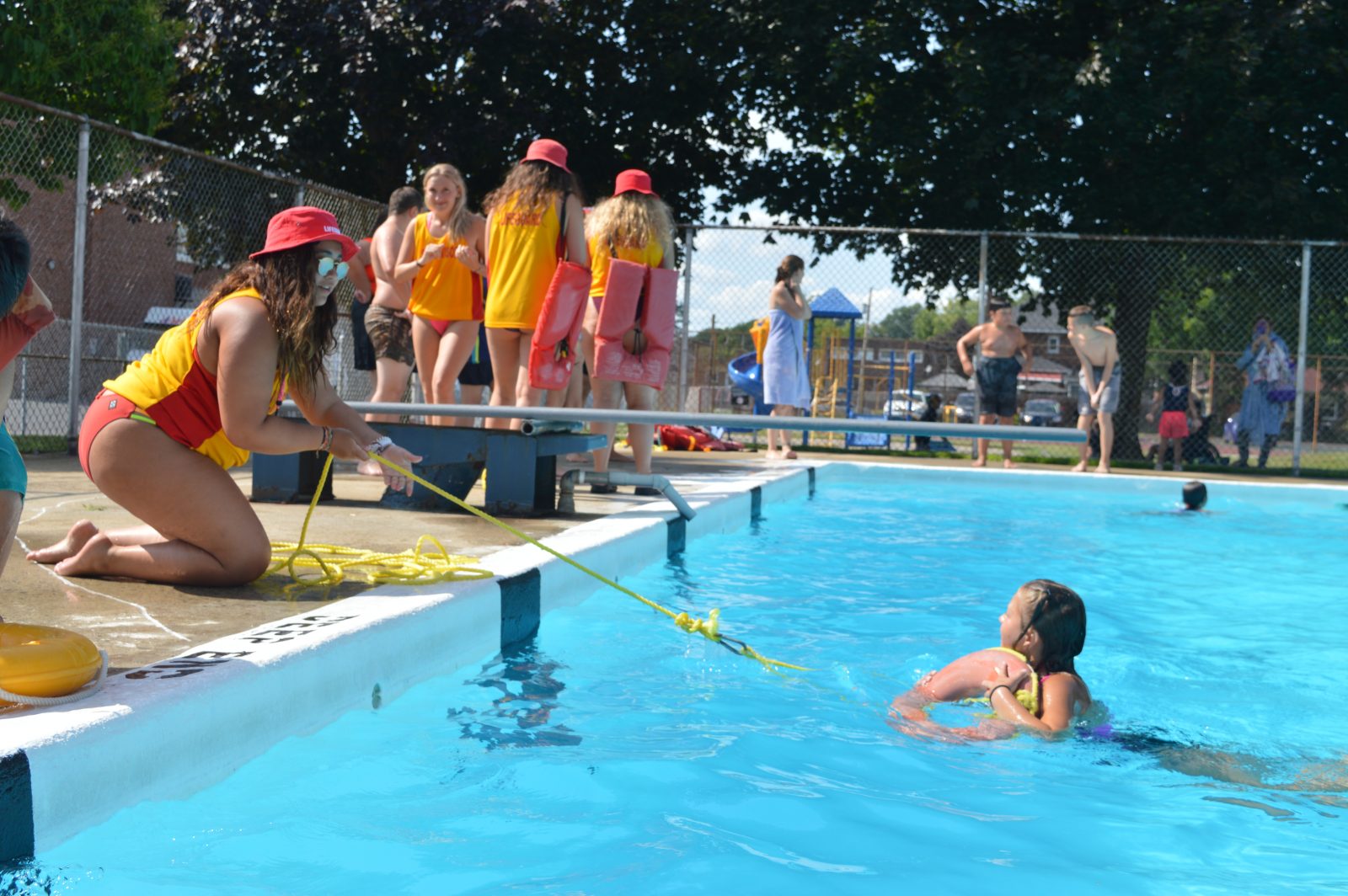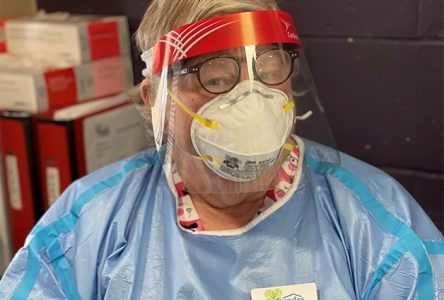CORNWALL & SDG, Ontario – Lori Gibeau, Aquatic Coordinator with the City of Cornwall, recognizes that locals are in a unique position living adjacent to the St. Lawrence River, and thus water safety is even more fundamental.
On Wednesday, July 24, the City’s five outdoor pools held training workshops for young locals, acting out different scenarios involving potential water hazards and rewarding them with certificates if completed.
“So we did a whirlpool because we were talking about currents in open water and we were trying to instruct kids on where and when to swim…and we touched on ice safety, encouraging everyone to check the depth before going onto the ice…the next station we are throwing life assists, so they are going to throw the line out and pull the swimmer in…and we actually have a swimming to survive station,” said Swim Supervisor Sarah Lawrence. The swimming to survive station involved a 50m swim and treading water for a short period of time.
“Many of our community take part in water related activities. With almost 500 Canadians drowning in preventable water-related incidents annually, even one drowning is too many…it is important to educate everyone on how to be safe in, or around the water and ice…water safety isn’t just in the summertime,” said Gibeau.
The Lifesaving Society, a volunteer charity organization designated to educating Canadians about water safety, marks the third week of July as Drowning Prevention Week annually, in an attempt to remind citizens of the statistics and dangers.
“Drowning is fast and silent, often occurring in less than 30 seconds. It is critical that parents and caregivers watch their children while they are in the water,” said Gibeau. “Always have a designated responsible adult to be a ‘backyard pool lifegaurd.'”
This year, the Lifesaving Society is placing emphasis on reminding those who are watching others swim to not be distracted by smart devices, like phones or tablets, even for a moment.
Gibeau said that swimming is the second leading cause of unintentional injury or death among Canada children under 10-years-old.
“Swimming skills need to be taught, they are not innate…basic swimming ability is a requirement of any meaningful attempt to eliminate drowning in Canada,” said Gibeau.
The following include a few statistics from the Lifesaving Society (spanning the years 2007-2016):
- 75 per cent of those who drown in Canada identified as male, while 25 per cent are female
- 25 per cent of those who drown are aged 20-34, 22 per cent are aged 50-64 and 26 per cent are 65 and older
- 64 per cent of drownings occurred during May and September in Canada
- 43 per cent of drowning incidents occurred in a lake or pond
- the most common risk factor among adults drowning included the lack of a life jacket, alcohol and swimming alone
- the most common risk factor among children drowning included lack of supervision, with 95 per cent of child related drowning deaths including this




